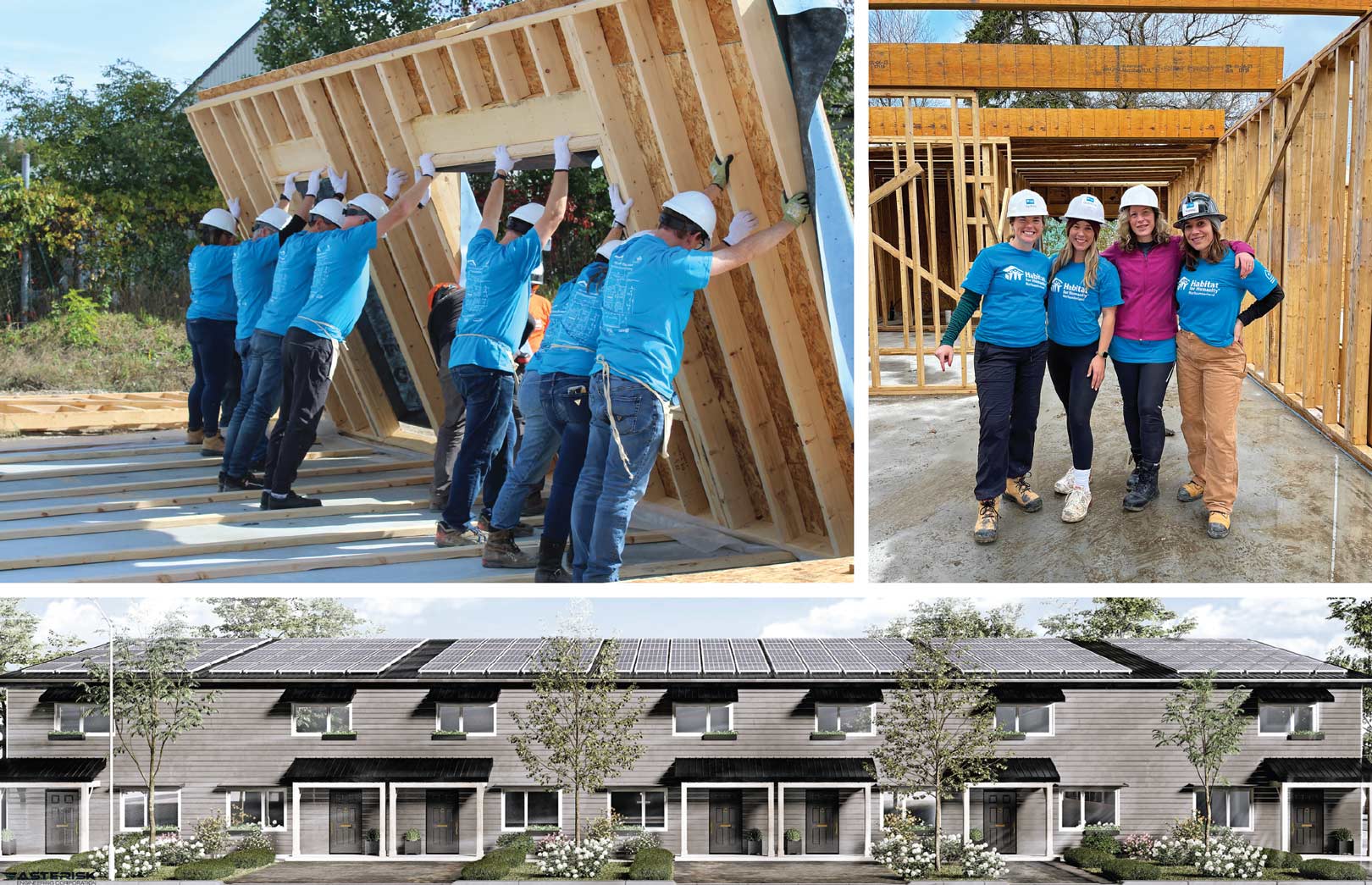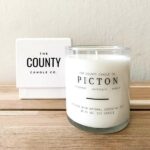
Habitat Northumberland’s newest development focuses on affordable housing with sustainability as a priority
Habitat for Humanity’s latest regional project may just be the future of affordable home ownership. The seven-unit townhome complex has been taking shape over the past six months, just north of Cobourg in the village of Baltimore. This special development is the result of many hands all working together on one big dream.
The development, “Building Hope with Families,” is a national record breaker – it’s the largest “net zero” Habitat build in Canada and the first in the area. According to the Canadian Home Builders’ Association, a net zero home is one that produces as much energy as it consumes and is up to 80 percent more energy efficient than one built to conventional standards.
Visionary projects are nothing new for Habitat Northumberland. In 1998, the local chapter got its start with an ambitious overhaul of former military housing in Cobourg’s east end. Working on a few units at a time, teams of volunteers chipped away until all 32 units had been redone. Since then, Habitat has sold homes to 65 families across the county, including units in Port Hope, Bewdley, Alderville and Colborne.
For Cathy Borowec, Habitat Northumberland’s CEO, the build in Baltimore is an exciting first project to take on in her new role.
“I was the first staff hired in Northumberland,” she says, recalling that in the early days in 2001, “they really just needed someone to answer the phones.”
Over the years Cathy grew with the organization, eventually becoming executive director in 2009. By that time Habitat had built homes across Northumberland and opened its Cobourg Restore location. After long stints at the national office and at Kingston Limestone, she has returned to Northumberland midway through a project that offers exciting growth opportunities.
Cathy’s experience has taught her that housing affordability means more than just initial investments on the way in. Beyond mortgage payments, homeowners have to navigate maintenance issues, cost of living increases and utility costs. The Building Homes with Hope project aims to lower these ongoing financial pressures. For Habitat, cost-cutting energy efficiencies dovetail with their goal of supporting local lower income families in owning and maintaining homes long into the future.
Jordan Hoogendam is the founding president and senior engineer at ZON Engineering, a Cobourg-based company that specializes in net zero and low-energy buildings, coupled with solar projects. Over the past five years, ZON has worked on a dozen different affordable housing projects, and they’ve seen firsthand how net zero builds can lower the cost of living on an ongoing basis.
“With the combination of onsite energy savings and solar generation that can be done in a cost-effective way, it’s really worth doing that work over the life of the project,” Jordan says. “It will reduce the cost to the home owners and make it a better building.” For the Baltimore project, ZON has been both the net zero consultant and the solar engineering partner. The townhomes’ energy efficiencies involve airtight construction and passive solar design – and ultimately a reduction in the amount of energy used. All energy on site is electric, with air-source heat pumps heating and cooling the homes and a separate heat pump for domestic hot water.
A rooftop solar array will generate electricity while the sun shines, and excess energy can be turned into credits, to be used during winter or when the solar panels are not actively generating. Though there are still some fees associated with being connected to the grid, the annual energy bill for one of the Baltimore homes is expected to be 90 percent cheaper than for a conventional home.
Cathy Borowec is proud to point out that the project is built according to universal design, a building standard that goes beyond mobility accessibility to create a functional home layout for all ages and abilities. That means accommodation for aging in place, intergenerational living or living with disability – scenarios that are often directly tied to housing affordability.
It’s much easier to implement both universal design and net zero at the time of the initial build, Cathy says. That initial investment avoids costly remodelling later on and ultimately makes home ownership financially sustainable over the lifetime of the building.
Volunteer builders help keep costs low on the Habitat development, and the seven-unit build has had a significant number of big teams come out to get the walls up. Donations of building supplies and materials for the net zero aspects of the project have also made a real difference to the bottom line.
Even so, the level of investment on this pioneering environmental project – as well as the sheer size of the development – required a level of capital fundraising that was over and above Habitat’s usual home builds. They called in the Pennington/ Campbell family to collectively take the lead on Building Hope With Families and co-chair the capital campaign, supported by a fundraising cabinet that included Lynda Kay, Patti Ley, and Jennifer Lean-Gadbois.
Jacqueline Pennington, a Northumberland-based real estate agent; her husband, Greg Campbell, a former bank vice-president; and sons Robert, age 9 and Elijah, 7, all jumped on board to make it a family project.
“The vision behind the campaign is about families helping to support other families in home ownership and affordable housing, so for us it was really nice to have the kids involved,” Jacqueline says. Greg, a self-described finance nerd, recognizes the regenerative strength of Habitat’s business model: Community contributions go towards building a house, a family purchases that house – in part through sweat equity – and mortgage payments are then reinvested into Habitat’s program to create more affordable homes.
“The value per dollar is just amazing with Habitat,” Greg says. “You put that money in, and then those mortgage payments go to build the next house, and it just happens again and again. That’s why Habitat is such a great organization – they have a really unique way of tackling the housing problem.”
Working in real estate, Jacqueline and Greg are familiar with the housing industry and have witnessed firsthand the rapid changes in the local market. They were eager to be involved in something that could make home ownership more accessible.
Their kids, Elijah and Robert have also been active in the campaign, taking part in a family movie fundraiser in Baltimore and presentations to local service clubs. There’s a family build day at the site this spring and they’ll be there. “It’s important for them to understand what other kids in our community are going through. Not everyone has a roof over their head like they do,” Jacqueline says.
The diverse group of contributors who are working together to create these new, future-ready family homes have demonstrated a powerful way forward for Northumberland County’s housing challenges.
If it takes a village to raise a child, it may also take a village to make a village.
*In early January, the Building Hope With Families campaign reached its fundraising goal of $420,000. It’s hoped that families will be moving in by fall 2024. Those interested in pursuing townhome ownership in Baltimore, who are residents of Northumberland County with a gross household income range of $60,000 to $100,000, can complete an Expression of Interest form at habitatnorthumberland.ca
Story by:
Meghan Sheffield




